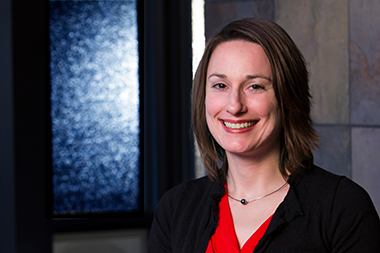Preparing for Disaster and Staying Ahead of the Curve
ALBANY, N.Y. (June 16, 2020) – As the world begins the slow recovery process from COVID-19, all while monitoring for a second wave, the critical importance of preparedness remains an often overlooked piece of the puzzle.
Rockefeller College Associate Professor of Public Administration and Policy Erika Martin has recently co-authored two new articles that shed light on our readiness and response to the Coronavirus.
Over 65 Population Most Likely to have Resources
Martin teamed with recent Ph.D. graduate Lucila Zamboni to examine how the characteristics of different households, including region, head of household’s education level, race/ethnicity, marital status, age, and presence of children or a household member with a disability, impacted the fulfillment of action-based and resource-based preparedness items.
 |
|
Associate Professor Public Administration and Policy Erika Martin
|
Their research suggests that while we may have at least some of the resources we need to deal with disaster, most families fail to check off the ‘action items’ that keep us connected in times of crises.
While about 65 percent of families had at least half of the resources recommended, including a vehicle for evacuation (96.2%), a food stockpile (83.8%) or financial resources (80.8%), far fewer had action-based items worked out, such as having a separate evacuation meeting point (38.2%) or an alternative form of communication (27.9%).
Martin highlights that while COVID-19 pandemic comes with its own set of challenges, having a preparedness checklist helps for the disasters that can’t be anticipated.
“For floods, earthquakes, hurricanes, and other natural disasters, households should be able to evacuate quickly, organize alternative meeting points, and have sufficient food and water stockpiles,” said Martin. “Backup generators can also be lifesavers.”
Among all age groups, it was over-65s in particular that planned better for emergencies in terms of emergency kits and food, the study found.
The study, “Association of US Households’ Disaster Preparedness With Socioeconomic Characteristics, Composition, and Region,” is available on the JAMA Open Network.
Zamboni is a research associate at the Center for Policy Research at the Rockefeller College of Public Affairs and Policy.
Critical Role of Local Health Departments
While it’s important to keep our families ready for the next inevitable disaster, the effort to get the U.S. back up and running has also highlighted the role of county and local departments of health in preparing for and responding to crises such as COVID-19.
Martin, who is a faculty affiliate with UAlbany’s School of Public Health, recently co-authored an article with Jessica Kronstadt, the director of research and evaluation at the Public Health Accreditation Board, for Health Affairs, entitled “No Longer Invisible: The Critical Role Of Local Health Departments In Responding To COVID-19.”
“There are more than 2,000 LHDs (local health departments) with authority to protect and promote the health of towns, cities, counties, and regions throughout the nation,” said Martin. “When the rubber meets the road, LHDs are at the forefront of responding to outbreaks and critical for mitigating the spread of infection and its sequela.”
In the article, Martin and Kronstadt point out that “many of the activities needed to slow the epidemic and minimize its impact on communities are part of LHDs’ toolbox. However, years of budget cuts and underinvestment in public health have made it challenging for LHDs to maintain these foundational capabilities—let alone have the surge capacity to address the COVID-19 crisis.”
While health departments have grown accustomed to doing more with less, the severity of the Coronavirus pandemic has highlighted how the public health system is being strained.
“To enable LHDs to play their critical roles in community response to emergencies and in continued work to improve population health, we need to ensure that LHDs do not slip back into invisibility but instead receive the ongoing support necessary to maintain their cornerstone role in protecting and promoting the health of our communities,” said the authors.
![]() For more news, subscribe to UAlbany's RSS headline feeds
For more news, subscribe to UAlbany's RSS headline feeds
A comprehensive public research university, the University at Albany-SUNY offers more than 120 undergraduate majors and minors and 125 master's, doctoral and graduate certificate programs. UAlbany is a leader among all New York State colleges and universities in such diverse fields as atmospheric and environmental sciences, business, education, public health,health sciences, criminal justice, emergency preparedness, engineering and applied sciences, informatics, public administration, social welfare and sociology, taught by an extensive roster of faculty experts. It also offers expanded academic and research opportunities for students through an affiliation with Albany Law School. With a curriculum enhanced by 600 study-abroad opportunities, UAlbany launches great careers.


